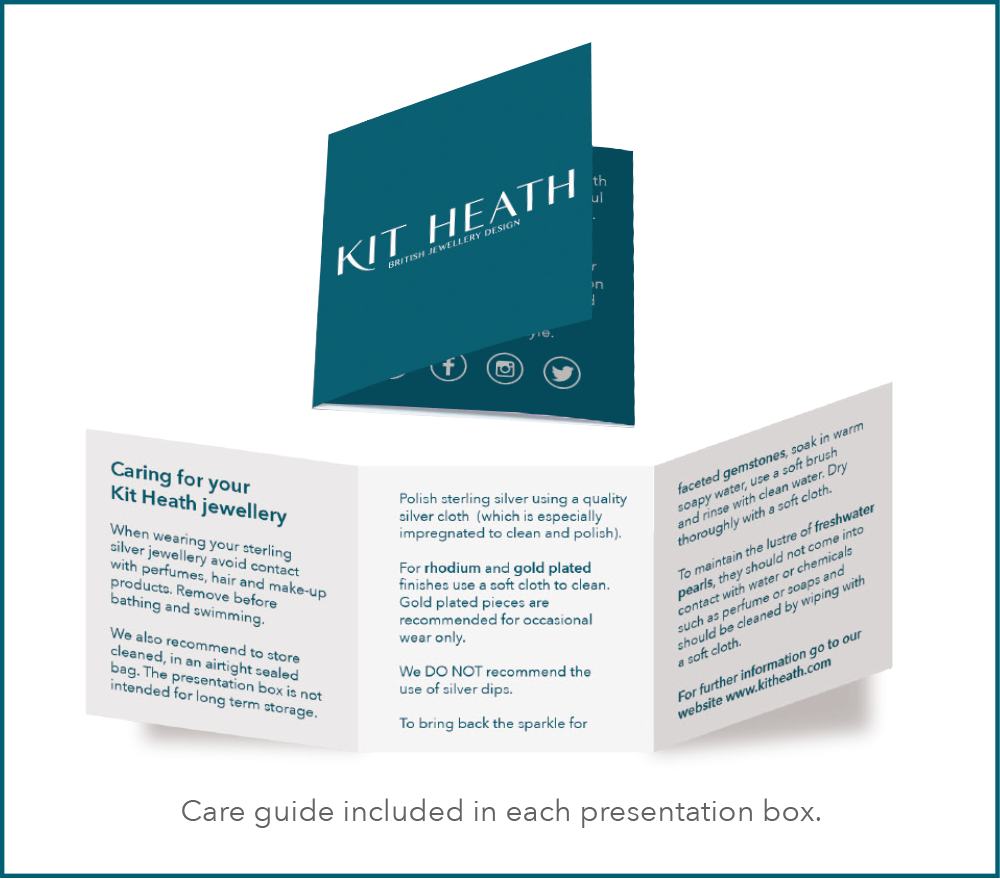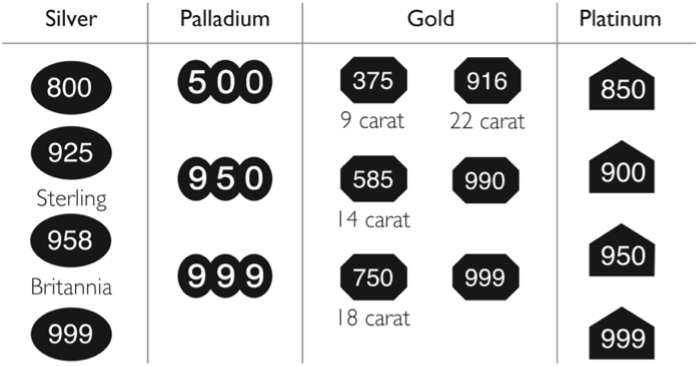What is Gold Plate?
Gold plate/plating is used to describe the covering of an item with a fine layer of gold. The plating can be full coverage over a base metal or sterling silver alloy or partial details to provide contrast in a two- or three-tone design.
Is Gold Plate “Real Gold”?
Yes. The same standards apply to real “solid” gold and the gold used for plating jewellery.
In the UK, to use gold plate/gold plating in describing an item of jewellery, the gold fineness must be at least 375 parts per thousand, i.e., a minimum standard of 9ct gold.
Additionally, when the word “gold” is used to describe a gold-plated silver piece of jewellery, it must be described as silver in the first instance, with the word “gold” immediately followed by “plated” (or permitted term), e.g., “18ct gold plated/bonded/clad silver ring”.
NB. The plating on an item does not qualify for any Hallmark to signify its quality so any item will be hallmarked as the main alloy underneath the plating.
What is the difference between 9ct, 14ct and 18ct gold?
The “carat” is the fineness of gold and refers to the proportion of gold used in the alloy. These proportions are measured in parts per thousand (ppt). The other metals used to make up the 1000 parts can be any mix of other precious or base metals, and their combination is what is referred to as an alloy.
The lowest standard gold legally recognised in the UK is 9ct. It must contain at least 375 parts gold. The lowest standard recognised in the US is 10ct (or “10K” as it’s known in the US.)
14ct contains at least 585ppt gold.
18ct gold must be at least 750ppt gold.
Other metals constituting the alloy do not have to be precious metals. The metals in the alloy can affect the colour appearance of the gold, e.g., more copper for a rose gold alloy and more silver for a whiter gold alloy.
Both 14ct and 18ct are widely recognised standards internationally.
What about 10K gold?
10 carat (10ct, or 10K) gold is an internationally used fineness of gold that is not legally recognised in the UK. 10ct gold is 417 parts gold to a thousand. Because it falls under the required fineness for 14ct gold, this would become classified as 9ct gold in the UK.
 are rhodium-plated sterling silver.
are rhodium-plated sterling silver. are suitable for engraving.
are suitable for engraving.




